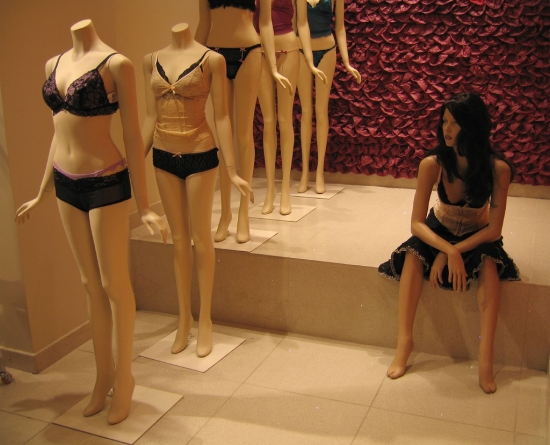Consumer spending is on the up, with retailers enjoying a relative boom in sales after a drought-filled recession. Autumn and winter collections have now hit the shelves of the UK’s top fashion retailers, meaning that a further boost is expected as consumers stock up on coats, hats and boots.

“All pretty much the same” says Jo Swinson
However, this week equalities minister Jo Swinson has stepped up a government drive to promote body confidence in women by claiming that many stores fail to display their ranges in a way which encompasses diversity. She pointed out that chains such as Topshop uniformly use only size 10 mannequins, while even plus size stores such as Evans fail to allow shoppers to view clothing on mannequins larger than a size 16.
The average size of UK women has risen from a 12 to a 16 in just over a decade, yet the standard size for mannequins remains somewhere between a size 10 and a size 12 – a fact which she believes creates a “beauty ideal” and fails to recognise the diversity inherent in our society.
However, Ms Swinson praised department store Debenhams for the relatively diverse range of mannequins and models used both in-store and in advertising campaigns.
She said; “I would really like to see more retailers doing the same.
“The images we see in the world of fashion are all pretty much the same – it’s as if there’s only one way of being beautiful.
“Many customers want to see more realistic images in magazines, TV and on the high street, and having mannequins that reflect and celebrate our diverse society is a really positive way of helping to achieve this.”
Debenhams certainly seems to be at the forefront of promoting diversity, as its Oxford Street store is currently planning to bring a range of size 16 mannequins into circulation. Furthermore, its summer catalogue also tackled the wide range of age groups it counts as its core customer base, with two models over the age of 40 and one over the age of 60 featured.
American retailer Abercrombie and Fitch faced the wrath of the British consumer after chief executive officer Mike Jeffries defended the firm’s policy of not stocking plus-size clothing. By implying that any customer over a US size 10 (UK size 16) would not be welcome in any of the chain’s stores, he attracted claims of discrimination and size-ism from customers and the national press alike.
However, John Munro of the British Retail Consortium (BRC) responded to Ms Swinson’s claims by defending retailers, saying that there are already a number of counters to negative body confidence in place in the majority of UK fashion stores.
He continued; “This can involve using a diverse range of mannequins and models, but also covers practical examples such as ensuring clothing is available in a wide range of sizes and offering advice in-store and online on figure-flattering clothes for customers that request it.
“Ultimately, individual retailers decide what approach to take based on their customers’ feedback and preferences.”
Do you think that using a wider range of mannequins would improve the body confidence of consumers, or does the majority of blame for negative body confidence lie with the media?
Previous Post
Can Champions save The High Street?